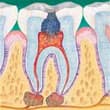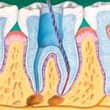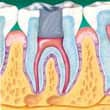We are all aware of how important our dental health is, however in most cases, we seek expensive orthodontic treatments to make sure our teeth and gums are in good shape. But the good news is that understanding the importance of oral hygiene isn’t going to be heavy on your pocket and instead requires you to make a more conscious effort at home.
Here are 6 simple rules that will keep toothaches and gum diseases at bay.
Eating Right for Healthy Teeth
You probably know that super size-sodas and candy are not good for your teeth. But did you know that starchy foods from pizzas to crackers can also cause tooth decay? If you’re looking for the culprit that causes tooth decay, look no further than the sugar and starches. Substitute foods that promote good oral health like fresh fruits and vegetables that are low in sugar and higher in water and fiber. The fiber acts as a natural toothbrush and helps to reduce the effects of sugar on your teeth. Choose foods rich in vitamin C like citrus fruits and unsweetened juices. The folic acid in spinach and broccoli also contain calcium that promotes strong teeth and bones. Dairy products are great for your teeth too. Not only do they include calcium, they have vitamin B 12 which helps strengthen your gums.
Salt Water Gargle
A salt water gargle is a well-known remedy for your oral health issues. A simple salt water gargle maintains the natural pH of your throat and mouth. By doing so, you are maintaining the natural bacteria and preventing the unwanted bacteria from residing in your mouth, while keeping infections away.
Regular Brushing and Flossing
Brushing regularly keeps prevents problems like plaque buildup and infected gums. When brushing your teeth, it is a good idea to use a brush with soft bristles which is gentle on your gums. First, brush the chewing surface of your teeth with a back and forth motion as well as in a circular motion with the bristles at a 45-degree angle to remove food particles. Flossing removes the plaque that forms on your teeth where a toothbrush cannot reach. These areas are, along the gumline and between your teeth.
Benefits of Tongue Scraping
One of the most profound and simple techniques of Ayurveda is tongue scraping. When you wake up in the morning, you would find your tongue a little coated. A tongue scraper and scrapes off any undigested food off of your tongue which also stimulates your digestive process.
Importance of Regular Dental Visits
Paying regular dental visits can detect early signs of dental problems like gum disease, periodontal disease, or dental caries that may affect the long-term health of your teeth. It also detects signs of overall systemic diseases like heart disease, diabetes and oral manifestations that can be picked up during a dental exam. Dental exams also include signs of oral cancer. Not a lot of people look under their tongue or at the back of their throat.
Benefits of Oil Pulling
Oil pulling is a very old ancient technique that requires you to swish oil back and forth in your teeth. Making it a regular practice will aid in curing tooth decay, heal bleeding gums, naturally whiten your teeth, strengthen your jaw muscles as well as prevent conditions like gingivitis and periodontal disease.














